Crime fiction has style—always has, always will. From the meticulous illustrations of Golden Age mysteries to the lurid pulp covers of midcentury America to the neon hallucinations and shadowy evocations of 1970s and 80s thrillers, crime has always memorable art. Some worry that modern-day covers are bland in comparison to the classics, but every year dozens and dozens of bold new books inspire bold new artwork to create that perfect fusion of words and visuals. Here at CrimeReads we celebrate the written word every day, but it’s no secret we love a good cover, too. With that in mind, we went back through the year in books with an eye on the covers. The year was dominated by loud colors, sharp contrasts, psychedelic swirls, and a few unforgettable closeups. From that collection, we’ve chosen the 20 best covers from the crime and mystery world. Thanks to all the artists who made these books possible.

The Infinite Blacktop, by Sara Gran (Atria)
A white-line fever dream of a cover that evokes the era of the great American road trip, the abyss of a good investigation, and something much more sinister, not unlike the Claire DeWitt novels themselves.

An Elderly Woman is Up To No Good, by Helene Tursten (Soho Crime)
Macabre needlework was an inspired choice for a truly strange and delightful mystery. Note the needle through the skull’s eye, just one detail that you might miss the first time and savor on later viewings. Special fans might want to see about getting this one in wearable form—a sweater, or a nice shawl, for example.

My Sister The Serial Killer, by Oyinkan Braithwaite (Doubleday)
The cover to this one is very cool, and we’d expect nothing less from the coolest book of the year. A woman looks fearlessly out from the cover wearing sunglasses in which we see a knife reflected twice. She is a powerful woman who conjures objects of danger—not because she is an object, but because she knows how to use them. Perfect for a book about building women’s community through covering up the murders of men!

Seventeen, by Hideo Yokoyama (MCD/FSG)
A stylish riff on midcentury travel poster style, with a nod to the old pulp tradition of layering in the character and storyline representations across the visual planes. Equal parts ominous and cool.

The Feral Detective, by Jonathan Lethem (Ecco)
A vertiginous look at palm trees at sunset, it’s the perfect subversive take on the midcentury California noir aesthetic, some of the same tropes Lethem is exploring in his trippy return to detective fiction.
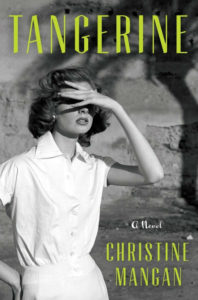
Tangerine, by Christine Mangan (Ecco)
One of the year’s most memorable and enticing covers, an image you think you’ve seen a hundred times before, on a hundred different thriller covers, and yet totally new. The chic and simple clothes, the rugged backdrop and most of all the artful obscuring of the eyes evokes an entire world, and even evokes the gothic traces that run underneath one of the year’s breakout debuts.

Still Lives, by Maria Hummel (Counterpoint)
A kaleidoscope of colors that illuminates something new every time you look at it, and offers up a fresh take on the disembodied heads that have plagued crime and mystery covers for so long.

Social Creature, by Tara Isabella Burton (Doubleday)
An eye that follows you around the room and a mascara streak that rips out a little piece of your heart, or maybe just chills you to your core. A perfect counterpoint for a story of class, covetousness, and obsessive friendship.
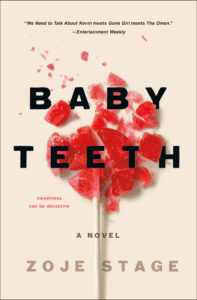
Baby Teeth, by Zoje Stage (St. Martin’s)
A striking image, that lipstick red of the shattered lollipop that conjures up the traumas of childhood (and of having children) without drawing any of those links too explicitly, and prepares the reader for an eerie tale of mother and daughter complexities and a battle of wills.

Cult X, by Fuminori Nakamura (Soho Crime)
We’re not sure the internet can convey how beautiful this cover is—a black, die-cut frontispiece opens to reveal an inside cover bursting with color, for a three-dimensional experience as epic as the book itself, and representing the same dichotomy of Spartan self-control and Libertine excess as the contents of Nakamura’s latest.
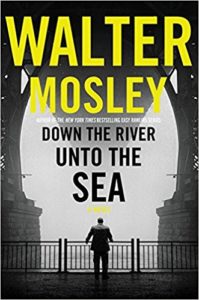
Down the River and Unto the Sea, by Walter Mosley (Mulholland)
A foggy, fatalistic snapshot that serves as a signal that, as with any book from Walter Mosley, the page-turning mystery is going to give way to a flash of existential dread and some weighty, human issues. A perfect NYC noir aesthetic for one of Mosley’s Brooklyn-based crime novels.
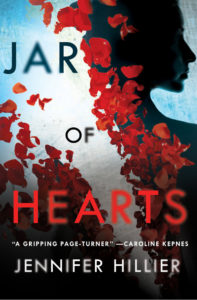
Jar of Hearts, by Jennifer Hillier (Minotaur)
A woman’s back, rent by roses, shows us from the get-go that we will encounter a character with bloody secrets. The side-turned silhouette and the motion of the rose petals act as cues for a twisty, ever-shifting plot, and are a welcome break from the rather annoying trend of portraying only parts of women on crime fiction covers. (Say it with me: no more napes! No more napes!)

Our Kind of Cruelty, by Araminta Hall (MCD/FSG)
At first glance, the bold title on the cover appears wreathed in ropes. Looking closer, they are in fact chains, representing both a necklace central to the plot and the emotional bonds which tie characters in this twisted narrative together. Get it? Twisted?

The Night Visitor, by Lucy Atkins (Quercus)
There are two versions of this cover; each has a small, iridescent beetle on its frontispiece, but in the earlier version of the cover (aka the one that showed up in our offices), the beetle has one leg set carefully to the side, as if it is in the process of being dissected, while the cover that accompanied publication sadly reattached the errant limb for a rather less disturbing (although still beautiful) viewing experience.

Alice Isn’t Dead, by Joseph Fink (Harper Perennial)
This cover’s simple illustration style initially conjures flashcards and government signage more than a desperate quest for a missing woman, but that’s all part of how Joseph Fink constantly destabilizes our expectations and revives old forms. Plus, the reflected image of the truck hints at the doubled worlds and duplicitous actions that inform the narrative.
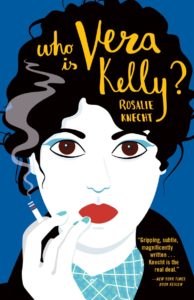
Who Is Vera Kelly?, by Rosalie Knecht (Tin House)
On the cover of this Cold War espionage novel set in 1962, we encounter the broad strokes of a mysterious woman, dressed as pop art, and smoking a cigarette. What better ode to both the book’s genre, and its stylish setting?
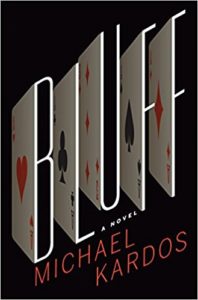
Bluff, by Michael Kardos (Mysterious Press)
A sharp, playful cover for a story about cardsharps, magicians and the world of underground poker in the tristate area. The colors here are striking and the eye wanders across the card faces as the action unfolds elsewhere—a classic piece of prestidigitation for a novel steeped in it.

Top Dog, by Jens Lapidus (Vintage Crime/Black Lizard)
Jens Lapidus, a defense attorney in Sweden with some highly placed mobsters on his list of clients, is skilled at capturing the seedy underbelly beneath Stockholm’s glitzy surface, and this cover design, with a cityscape turned sideways, perfectly captures the playful and disorienting nature of his novels.

Remind Me Again What Happened, by Joanna Luloff (Algonquin)
This cover design, with its blurry polaroids signaling fuzzy memories and a hint of a tropical sunset, is perfect for Luloff’s new psychological thriller, in which a woman wakes up in hospital with no memory of her last family vacation, and must trust her husband’s version of the story. Incidentally, this is also one of our favorite titles of the year, itself a perfect encapsulation of the unreliable narrators that have taken over the genre.
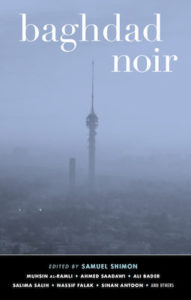
Baghdad Noir, edited by Samuel Shimon (Akashic)
While each new addition to the Akashic World Noir series includes a moody image of the volume’s setting, Baghdad Noir, with its minaret shrouded in fog, is perhaps the best evocation of a city that’s undergone many a transformation, and an acknowledgment that this anthology (which took 10 years to come together) can only hint at the true experience of life in Baghdad.




















